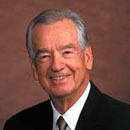Boeing, NASA pause experimental, sustainable plane project
Published in Business News
Boeing and NASA will pause work on a new, experimental aircraft design meant to deliver more sustainable options for the future of aviation.
The aircraft project — called the X-66A Sustainable Flight Demonstrator — featured long, thin wings that would increase fuel efficiency and, consequently, lower carbon emissions.
Boeing will continue to study the thin-wing technology, but the aircraft project as a whole will be put on hold, Boeing and NASA said Thursday.
“We have learned a lot in the past few years partnering with NASA on the X-66 program that will influence the future generations of airplane design. Going forward, we will focus efforts on the single most-promising design feature … the thin-wing design,” Boeing said in a statement.
As a result, Boeing will move engineers from the X-66A experimental project to its commercial production lines, specifically the 777X and 737 Max factories.
The Sustainable Flight Demonstrator, launched in 2023, was part of a larger effort led by NASA to research fuel-efficient and sustainable designs, from wind tunnel tests to fluid dynamics models to structural design changes.
At Boeing, it was also teed up to potentially be part of the company’s next all-new airplane, according to then-CEO Dave Calhoun. When Calhoun talked about the project in 2023, he hinted it was the type of radical design change that was needed to justify the huge investment of building a new aircraft.
At the start of the project, NASA committed to spend $425 million on the aircraft’s development, while Boeing and industry partners committed to $725 million. The prototype aircraft was set for test flights in 2028 and 2029.
Now, based on research already conducted through the Sustainable Flight Demonstrator project, Boeing has proposed a new research focus that centers on ground-based testing, NASA said in a blog post Thursday, confirming that the company and the space agency were “evaluating an updated approach” to the project.
That ground-based test bed would study the potential for thin-wing technology, NASA continued. In the meantime, the X-66A Flight Demonstrator would “pause for later consideration” based on the results of that thin-wing testing.
The X-66A prototype design featured long, slender wings attached high on the fuselage. The wings were so long that they had to be supported by trusses anchored at the base of the fuselage and angling out and up to the wing.
They would also have to fold, near the wingtips, to allow the plane to fit into the same gates as today’s aircraft, including the 737.
Those thin wings, and the fuel efficiency benefits from the aerodynamic design, could still be applied across multiple products, Boeing and NASA said Thursday.
Personnel moved from the X-66A project to the commercial airplanes division will support development and certification efforts for its long-delayed 777X and 737 Max variants, Max 7 and Max 10.
That shift comes as Boeing’s current CEO Kelly Ortberg has made a push to focus the company’s resources on the core areas of its business, including commercial production, and pare back on others. Earlier this week, Boeing announced it had sold its flight navigation unit Jeppesen and other digital assets in a $10.6 billion deal.
Ortberg told financial analysts on an earnings call Wednesday that he had identified other areas of the company’s portfolio where it may cut back but noted that the digital assets sale was likely the largest change to come.
©2025 The Seattle Times. Visit seattletimes.com. Distributed by Tribune Content Agency, LLC.












Comments